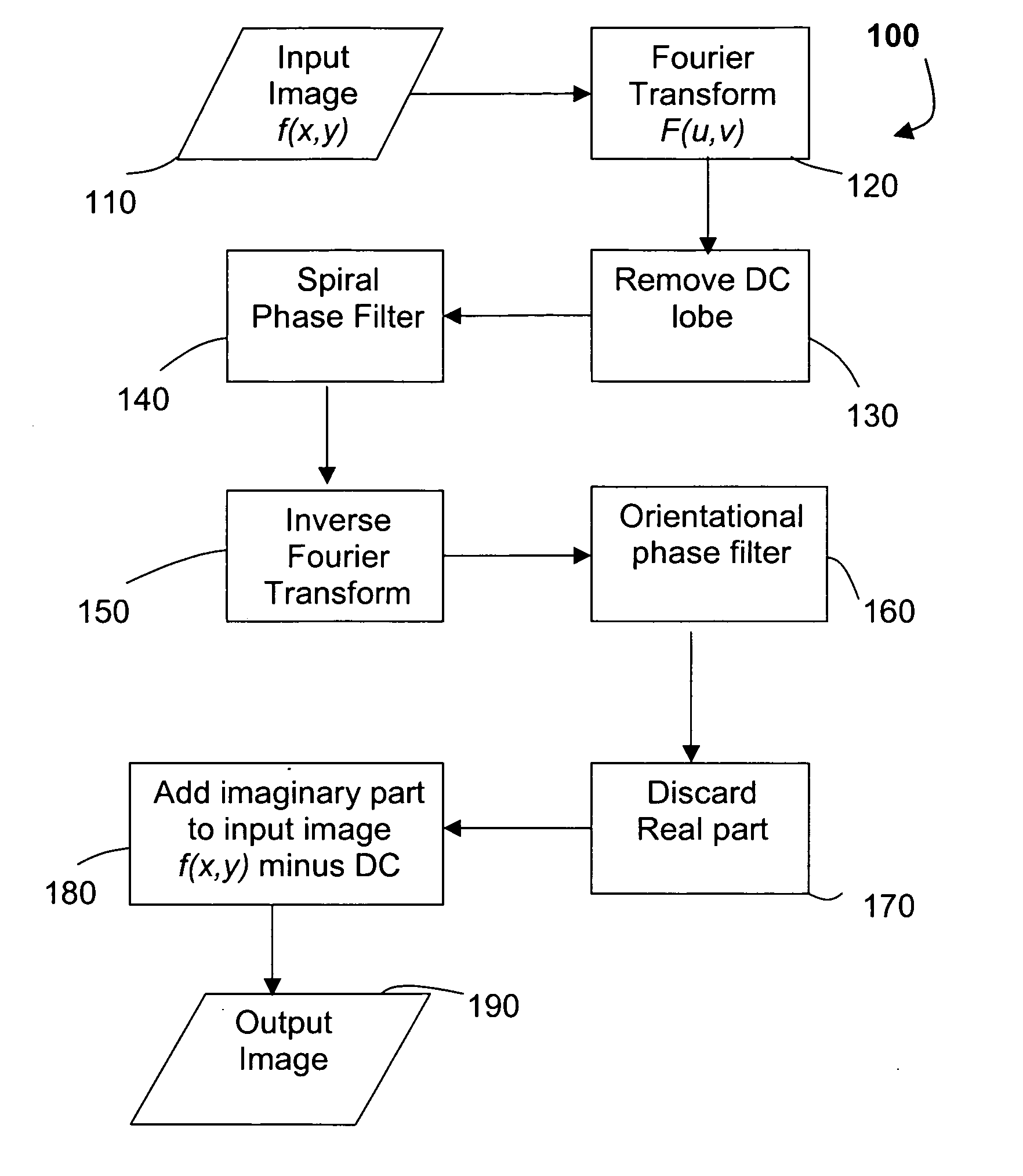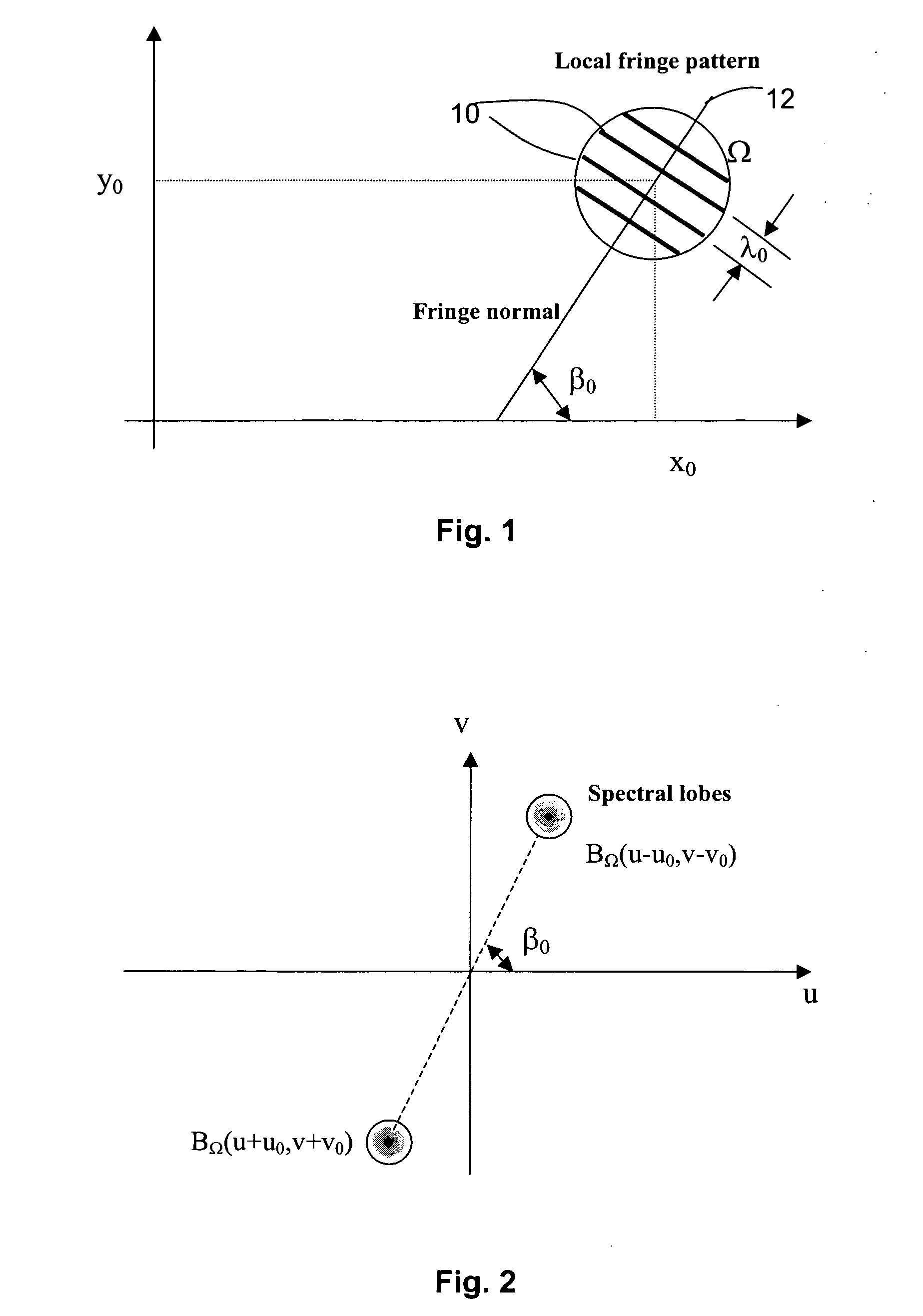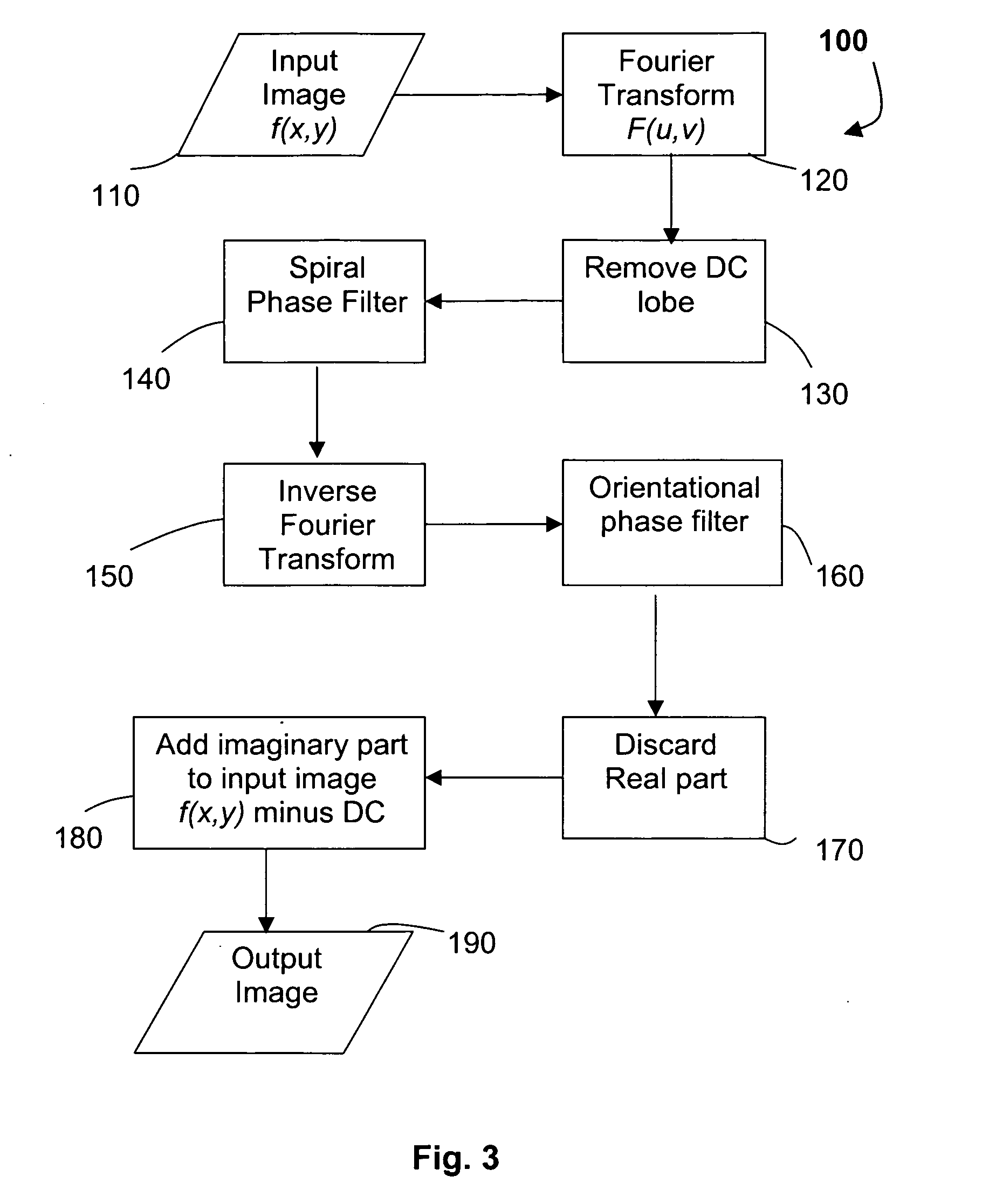Demodulation and phase estimation of two-dimensional patterns
a two-dimensional pattern and phase estimation technology, applied in the field of two-dimensional code patterns, can solve problems such as defects and errors that may also be produced by the preliminary demodulation process, phase estimation errors, and restrictions on the smoothness of curves
- Summary
- Abstract
- Description
- Claims
- Application Information
AI Technical Summary
Benefits of technology
Problems solved by technology
Method used
Image
Examples
Embodiment Construction
[0077] Consider a two-dimensional fringe pattern with intensity of the fringe pattern as follows:
f(x,y)=a(x,y)+b(x,y).cos[2π(u0{x−xo}+v0{y−y0})+χ] (1)
[0078] Position coordinates (x, y) may be continuous for an analog pattern or discrete for digital patterns. A background level is denoted by a(x,y) while an amplitude modulation term is denoted by b(x,y), both assumed to be slowly varying functions. Phase term χ(x0,y0) presents the local offset of the overall phase term in the square brackets [ ] of Equation (1).
[0079] Referring to FIG. 1 where a 2-dimensional fringe pattern or AM-FM pattern, located around a point (x0,y0) and formed by a number of fringes 10 is shown. A small region of interest is defined by Ω. Within this small region Ω, the spatial frequency components u0 and v0 are slowly varying so that they are effectively constant around the point (x0,y0), making the carrier a linear function of x and y. A normal 12 to the local fringes 10 is at an angle β0 to the x-axis.
[00...
PUM
 Login to View More
Login to View More Abstract
Description
Claims
Application Information
 Login to View More
Login to View More - R&D
- Intellectual Property
- Life Sciences
- Materials
- Tech Scout
- Unparalleled Data Quality
- Higher Quality Content
- 60% Fewer Hallucinations
Browse by: Latest US Patents, China's latest patents, Technical Efficacy Thesaurus, Application Domain, Technology Topic, Popular Technical Reports.
© 2025 PatSnap. All rights reserved.Legal|Privacy policy|Modern Slavery Act Transparency Statement|Sitemap|About US| Contact US: help@patsnap.com



